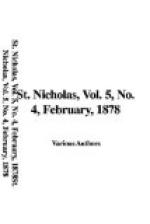This jelly-fish looks like a tiny ball of the clearest ice. All around it, much after the fashion of the lines of longitude on a geographical globe, are eight bands a little less transparent than the rest of the body. On each of these are thirty or forty small paddles, in shape like the floats upon the paddle-wheels of a steamboat; and it is by means of these that the little creature pushes itself along in the water. The paddles are alive, and move either swiftly or slowly, one at a time or all together.
Not only can this natural paddle-boat send itself along, but it can also cast anchor. It puts forth very fine threads, which gradually lengthen, unfolding from their sides transparent tendrils like those of a vine. These catch hold of and twine around some fixed thing, and moor the craft; and when the Beroe is about to be roving again, they unwind themselves, and all slip quietly back into the little ice-ball out of sight.
There are countless millions of Beroes in the Arctic regions, where the sea is in some parts colored by them for miles and miles. If there were not such immense fleets of these tiny paddle-boats there would be little chance for us to wonder at them, because they choose for their moorings just the places where whales love best to feed and play their rough games, and where, too, their own presence in the sea makes it into a kind of soup of which whales are very fond.
TINY TREES.
Only think of trees, full-grown trees, so small that several of them,—roots, stems, branches and all,—piled one above another, would not be as tall as I am!
What kind of birds would stoop to roost in such little, little trees, I’d like to know?
They tell me that such tree-lings do really grow, away up, on high mountains, near where the snow stays all the year through, and also in very cold countries near the polar circles.
I do hope the words “polar circles” will bring clear ideas to you, my dears. They’ve quite tangled up my notions. Wont some of you explain the things to me?
BIRDS AND TELEGRAPH-WIRES.
The Little Schoolma’am has been talking about snow-birds, and she says there was a poem about them in ST. NICHOLAS for April, 1875, and also a picture of the dear little fellows comfortably perched on a telegraph-wire, out in Colorado, somewhere. I dare say you’ll remember them, my chicks.
Well, she went on to say that telegraph-wires are not always such good friends to birds, for she had heard that, along the great railroads in the West, large numbers of prairie-chickens are killed at certain seasons of the year by flying against the wires. Sometimes this may happen in the dark, but more often in the day-time when the wind is very strong.
Of course, this can’t very well be helped; but it does seem dreadful, doesn’t it, my dears? However, the section-men, who have charge of the railroad tracks, get some good from it, for they make a regular business of gathering the fallen birds, which are then cooked and eaten.




